There is no shortage of news flowing out of Afghanistan concerning election mischief and general mayhem. Just tonight we received a report about a BBIED who walked into the Pakistani Khasadar (Tribal) Guard mess and detonated his rig killing 22 and wounding another 15. That was probably revenge for the recent killing of Baitullah Meshud by drone strike. We have been spending an inordinate amount of time investigating the increased number of Anti Government Element (AGE) incidents on the main roads and in Jalalabad City to get a handle on what is criminal and what is Taliban activity.
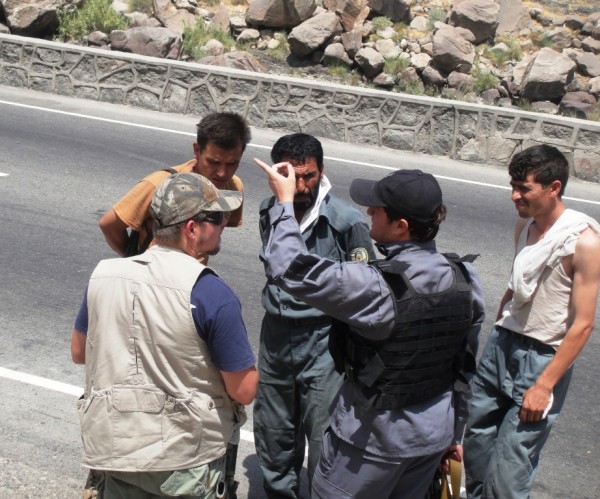
Late last week we had a fairly large firefight in downtown Jalalabad (most unusual) but upon investigation looked to be a Badal (pashto for vengeance) act – the third targeting a small ANP post in as many weeks. This was a new tactic though – one or possibly two gunmen firing at the post from across the street while a third assailant, described as small and swift, bum rushed the main gate with a satchel bag full of hand grenades. One ANP officer and the grenadier were killed and another five ANP officers were wounded by grenade shrapnel. Rushing into a building behind a shower of hand grenades is an effective technique when properly executed by a squad or so of infantry but this looks to be a poorly planned and executed attempt to kill someone – not a deliberate attack to seize a government facility.
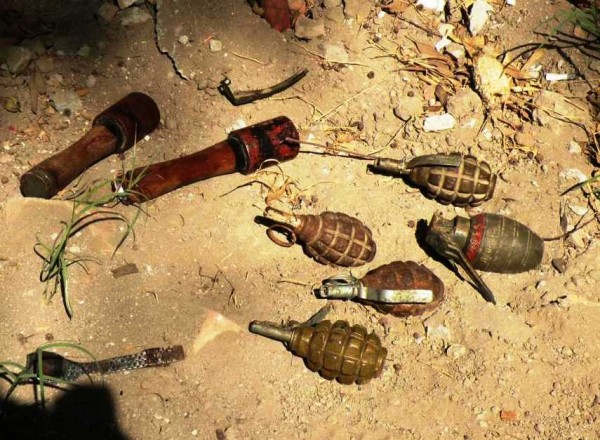
There is no reason to anticipate the election results for some time. Allegations of fraud continue to pour in and this report from Ben Arnoldy of the Christian Science Monitor (who I have seen several times outside the wire getting his own stories) sums the situation up succinctly.
I have been reading the new U.S. Government Integrated Civilian- Military Campaign Plan for Support to Afghanistan as well as the Commander of ISAF COIN Guidance and all I can say about them is actions speak louder than words. There is a world of disconnect between what has been written in these documents and what is happening on the ground. Joshua Foust posted his thoughts on the topic yesterday pointing out that there is no detectable change from what the previous COMISAF guidance. I agree and wanted to exam a couple of recent incidents to explain why we (the United States and our allies) suck at fighting the counterinsurgency battle.
Earlier in the month this story about a Bagram PRT was published in Wired’s Danger Room and it is a classic example of attrition warfare mindset being applied to a COIN problem. The article covers what is termed a “KLE” (key leader engagement) and “HA” (humanitarian assistance) mission to a small village just outside Bagram Air Base from which the military suspects rockets were fired toward Pogadishu (Bagram Airbase – hat tip to Old Blue for the new name.) Although the reporter is not savvy enough to recognize what he is witnessing – this mission is a perfect example of what not to do when engaging an Afghan village.
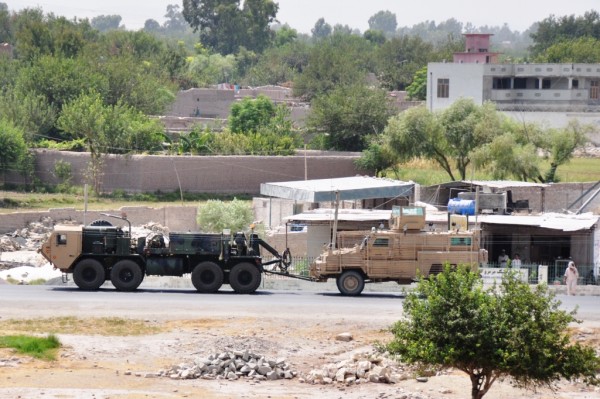
The problems start when a large force rolls into the town in MRAP’s with full battle kit, a bunch of “HA” aid bags full of tea packets, soccer balls, school supplies, two terps, some medical staff, and no plan. For those of you who have never been to Afghanistan let me clue you into a fact – the last thing in the world these people need is tea.They have plenty and they hate Lipton tea bags because they suck – that is like rolling into a Mexican border town and giving the locals packets of cocaine and boxes of 5.56 ammo – they have enough of that shit … although the thought counts for something I guess.
The “KLE” meeting doesn’t go well. The locals bum rush the supplies, the medics have no female terp and are also getting overwhelmed to the point of panic by people who no doubt have a ton of problems such as infected sores, intestinal parasites, malaria etc.. which the Americans could easily treat if they had the time, patience and a clue. They see a young man snapping pictures with a cell phone – something Afghans do all the time – and interpret this as possibly hostile activity so they scan him with the BATS (Biometric Automated Tool Set) and erase his cell phone. Of what possible relevance these cell phone pics could be remains a mystery to me. Young Afghans taking cell phone pictures is what one expects to see and is therefore not a “rule of opposites” scenario.
An old man smacks one of the little village girls and an American officer steps in to intervene with a “stern warning.” What kind of stern warning? What the hell is the Captain going to do? What did the terp tell the old man? I bet the Captain in this story has no idea and I also bet it was not what the young Captain told him to say. Little girls in this country have much more pressing concerns than getting cuffed upside the head by their granddad. That is no reason to draw a line in the sand which may alarm some readers but is the way it is here and the Terp knows that. And throughout the mission the company First Sergeant is “getting very agitated” because “They’re going to put soldiers lives at risk.” I hate hearing “they”….who the hell is “they?” What exactly about “they” is putting soldiers lives at risk? A company first sergeant is supposed to be an island of calm in the sea of chaos which is the Big Army. One that gets flustered at being around Afghan woman and children is putting troops at more risk than a “they.”
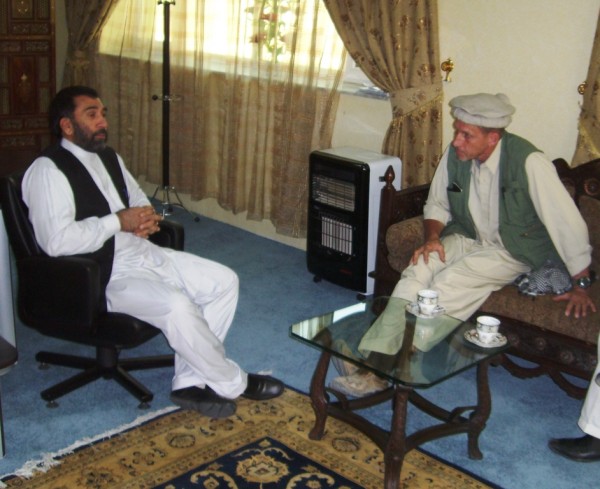
What is putting the soldiers at risk is the institutional stupidity. Let me explain why. In order to do “KLE” you need to engage the “key leaders” in a manner consistent with your objectives. If your objective is to provide aid and make new friends how should the company commander present himself? I vote for he drives in with his terp in an unarmored SUV; sits down with the local elders and asks permission to come in with his company and also for their help distributing some supplies. You ask them to provide male and female interpreters as well as supervisors to assist with the distribution of aid and you agree to the rate for these folks. You both agree exactly how the MEDCAP will go and pay for supervisors – both male and female to run that too. Leave the security outside the village and walk in without all the body armor – side arms or slung rifles are no big deal and soldiers should never allow theirs to leave their bodies anyway so wear them. The visit is supposed to be about trust and you can only show trust with actions …. not words. If the elders do not hold up their end of the bargain you leave. It is that simple – Pashtunwali cuts both ways and if they won’t play ball they should get the stick … or just be ignored. Both responses are appropriate depending on location, tribal composition, and the overall Provincial security picture.
This is how we get large projects done in the most volatile regions of the south and east and is nothing more than good manners and common sense. What do you think is going to happen when you bring in a large convoy of fully armored troops who have not a clue what they are doing into a village? I run paydays where we distribute very large sums of money to hundreds of poor illiterate workers and these pay calls go like clockwork. The reason they are so smooth is that the Afghans organize them – I can only imagine what a Charlie Foxtrot it would be if the Bagram PRT did pay calls for me ….those guys seem clueless.
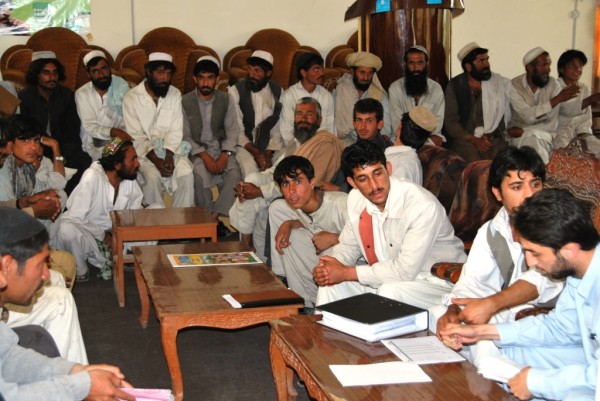
As I mentioned above the Bot and I have been spending a lot of time trying to get a handle on the nature and seriousness of the many incidents being reported daily. This means going out to the various posts and talking with the Afghan police or army guys who man them. The physical condition of these posts are very poor as is the most of the equipment the troops are issued, but what is most appalling is the complete lack of adult supervision, military planning, and meaningful mission.
The Bot and I are looking at a ridge line some 600 meters away which is the attack point for Taliban gunmen who fire on this post regularly. There are four ANA soldiers and four ANP policemen manning this position and they have a Hummer mounted M60 machinegun, and RPK machinegun and their rifles for defense. Apparently the bad guys tend to attack in the evening when the ANP re-supply truck arrives with chow and they have wounded at least two ANP policemen this month.
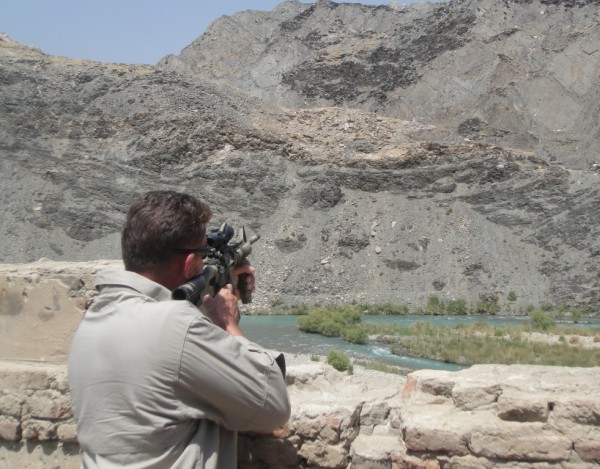
What is frustrating to guys like Bot and I is the fact that we could easily sort out this threat with a good machinegun squad and a mortar – manned by proper infantry. An American squad with a sharp squad leader would be perfect for a job like this. The reason why American infantry is so effective is that their machineguns come with tripods and T&E’s which are traversing and elevation mechanisms. Machineguns are deadly in the defense because you can dial them in using a map, range finders, a little math and test firing. There are five different firing spots on the ridge across from this position and each of them should be dialed in on range cards so that the leader calls out a target designation off the card when he wants to shift fire. The machinegunner than dials that target in on his T&E and he can rock and roll. A mortar which has been placed in properly can do exactly the same thing – register the targets allowing for first round hits which saves ammo and pumps up the troops.
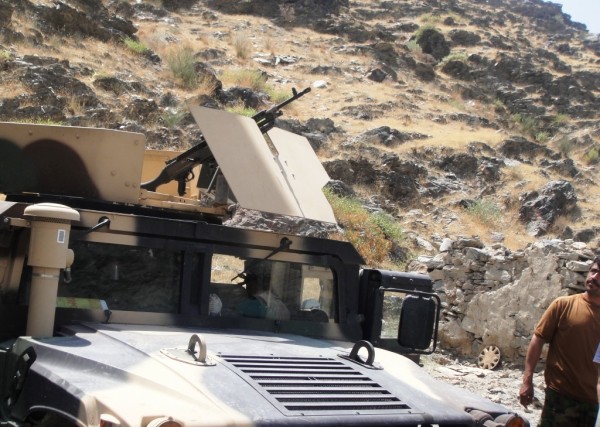
The generals can write all the pithy COIN sounding directives they want but words mean little outside the wire. Only actions count and it seems that our seniors are forgetting the age old dictum “you cannot fool the troops” and that applies to all troops including Afghans. We used to know how to do counterinsurgency back in the early parts of the last century. We would actually embed our troops in with the local formations to live, train, fight and die with them. We do not embed troops now – we say we do but we don’t. Embedded training teams live on mini FOB’s inside Afghan FOB’s and the Afghans they are supposed to mentor cannot enter the little American FOB’s without an escort and a body search. The Americans do not go out and stay out with the troops they mentor and when they do go out the Americans are in MRAP’s with full body armor while their trainees are in unarmored pickups without body armor. That is not leading be example – in fact it is not leading at all. Embedded trainers need to train Afghans exactly as they would Americans which means they really embed, eating what they eat, sleeping like they sleep and fighting with them wearing the same kit they wear. That is what my friends who work that mission tell me they should be doing but they can’t and they are frustrated.
I have mentioned this before and want to stress it again – I joined the military in 1978 back when morale was in the toilet and discipline in the ranks almost nonexistent. The American military we know and love today was created in the 1980’s during the presidency of Ronald Reagan by a cadre of officers who were able to erase the stain of Vietnam with the generous help and support of the greatest President we have ever had. The current occupant of the White House knows nothing about the military and could not in a million years have the impact on that organization that President Reagan did. The current senior military leadership apparently knows nothing about Vietnam or they might understand the consequences of putting layers of ass kissing, careerist motivated, humorless and petty Colonels in stupid do nothing staff jobs to micromanage the troops in the field. Leaders who create larger and larger staffs do so to insulate them from having to take responsibility for everything happening under them in the chain in command. That is why you only see the Navy relieving O-6 level officers as a matter of routine – you can’t create more and more staff jobs on a ship so a Navy CO actually has to live up to the responsibility for everything which happens or fails to happen in his command ….just like a junior officer in the Army does. We need Generals who come to Afghanistan and command in the manner of a U.S. Grant or Patton or Razor Ray Davis. Men who will dump the staffs, ignore PowerPoint briefs, get off the FOB’s and out with the men in the field.



“For those of you who have never been to Afghanistan let me clue you into a fact the last thing in the world these people need is tea. They have plenty and they hate Lipton tea bags because they suck ”
Amen brother ! — Another outstanding post, thanks babaT
Great! Well worth the wait.
You’re kidding? They actually bring tea? Into an area that can get great tea from India? Hmmm… Okay, so what we’re doing is acting like Lady Bountiful, making a lot of assumptions and slathering on a bunch of stuff they don’t really need or want. Lipton! HA! Even I hate Lipton!!
The mindset that affects the everyday policies we employ seems to be rooted in fear. Which makes it very difficult to employ policies (not wearing armor, meeting on their terms) like the ones you suggest.
Here’s something from Pema Chodron’s book:
“Confess your hidden faults
Approach what you find repulsive
Help those you think you cannot help
Anything you are attached to, let it go.
Go to places that scare you.”
We’re very much going to have to do all of this. Pema’s da bomb, by the way.
Thanks for this report Tim. Not encouraging. I can imagine Old Blue grinding his teeth in frustration when he reads this. MacCrystal is running out of time to turn this thing around. Pogadishu (I told Blue he should TM that) is an overflowing mess of twenty thousand troops with apparently little to do to further the war effort. Some risk averse commanders need to be fired. Many of those troops need to be reasigned to meaningful jobs that have to do with winning the war. It sounds like Gates is not going to give MacChrysal more troops so he’s going to have to take some drastic measures. From what I’ve read about the man, failure is not in his nature. Let’s hope Afghanistan is not his first.
You are right on! The fear that someone will get hurt or killed has led us to enact idiotic TTPs and SOPs which only prolong our time in Astan; thus more people will get hurt or killed. We have to be willing to assume some risk to accomplish the mission. COIN is not easy or sexy it’s relationships and hard work. In my experience those that were unwilling to talk to Afghans as people and not be afraid are the ones that ended up with reasons to be afraid as they become targets.
are these elections any more or less legit than the ones tat were held when the Russians were there
The Thunder Run has linked to this post in the blog post From the Front: 08/31/2009 News and Personal dispatches from the front and the home front.
I have never seen so many majors and colonels in one place as I did when at Bagram. I guess they need them to run salsa nights and make sure the massage parlor and burger king runs smoothly…
Tim,
Another outstanding post…they should start publishing these in the Early Bird. ADM Mullen needs to start reading this for a little ground truth reality.
I’ve been following the academics debating COIN on Exum’s blog and the Military Senior Leadership saying we need to do this and that on the news shows and in NYT articles. However, at the end of the day, it doesn’t matter how intelligent our plan is and how smart/dynamic GEN McChrystal is if our actions on the ground don’t start reflecting a true understanding of what needs to be done.
The Bagram PRT’s HA mission reminds me a lot of my first attempt at “COIN” in Kabul over 18 months ago as a platoon leader working for ARSIC-Kabul.
My first HA mission was a little bit more organized, but I realize now it was still a failure. Showing up in M1151s and throwing bags of goodies at the elder or mullah to hand out made us all feel warm and fuzzy, but it didn’t show respect, it didn’t show trust and it certainly didn’t do anything to improve IRoA legitimacy. I look at alot of the missions I did my first five months in Afghanistan as a complete waste. Although they were a “success” by the criteria my company commander and the ARSIC set, I’ve come to grips with reality and realized what a waste of time it was and that ultimately we didn’t make any measured gain.
I think one of the problems the Army has right now at the tactical level is a lack of quality field grade and company grade officers who are able to intelligently evaluate an operating environment, think outside the box and execute a comprehensive COIN plan with the understanding that the plan is just a baseline and it will need to be continuously re-evaluated and modified in reaction to the friendly and enemy conditions.
The reason we lack quality officers is because many have left or have resigned themselves to the fact that they can’t do what they know is right because they won’t get a fair evaluation report from their less dynamic boss and it could hurt their promotion potential. We are left with Battalion/Brigade commanders that are trying to cover their ass just long enough that they can make it to General Officer. We have Company Grade officers in fear every day that one of their Soldiers will decide to do something stupid and that the AR 15-6 investigation will recommend a GOMO for the officer for something they really couldn’t control. On top of all of that, we have undue pressure coming from DC/Pentagon and other political circles to keep our casualty rates as low as possible so we don’t lose the support of the fickle American public.
Our senior leaders are risk averse and that behavior has trickled down the ranks. We don’t reward creativity, we punish it. We have a zero-defect Army. If you’re creative and successful, you get a Bronze Star and a good OER. If you’re creative and don’t get it right the first time, you might just piss your boss off enough(who happens to be looking for his full bird or first star) that he writes you an unfavorable OER that pretty much kills your career. Of course, he doesn’t have the balls to fire you outright because he still needs to be able to sell HIS boss that his Command is successful and doing “great” things so that HIS OER and EOT award will look good. You make one screw up and there goes your career. I’ve been harping about this for 9 months now to anyone that will listen, we need to stop punishing those that had the audacity to try something and may not have been successful the first time. There is no one “right” way to fight COIN, it is going to be different in every district. The only way to find the right balance is to have the audacity to try. You may not be successful the first time but from your failure you will learn and be able to adapt.
Alot of very smart Company/Field grade officers and NCOs, who also happen to be great leaders, know what needs to be done and how to do it, but we constrain their options every day because of the way our promotion/evaluation system works and because of the stringent SOPs/TTPs/Policies that come down from higher that limit our options to the point that we might as well never leave the FOB.
McChrystal’s guidance is very clear about the need for US forces to partner with ANSF, but when are we going to see the walls come down between the Afghan “side” and US “side” of the FOB? When are we going to start letting US Personnel get in an ANA Ford Ranger without their body armor and take a ride out to the bazaar for a KLE with the business owners there? When are we going to accept the fact that you can’t make measured gain without being audacious and that we must be willing to accept the fact that while casualties may happen, in the long run we will get more done and quicker if we start allowing our junior leaders do what they need to do based on their evaluation of the local conditions.
Situational awareness can never be gained from PPT, VTCs, BFT, UAV, TACSAT. The only true SA is what the commander on the ground sees, hears, smells and feels. That SA is continuously changing every second and that means no senior leader can ever fully understand or appreciate what the true conditions on the ground are in every province let alone district. So logically if the Senior Leader doesn’t have SA, then he should be trusting his subordinates on the ground to make the best decision for the Mission and the Men based on his overarching guidance. That leader on the ground should have the widest array of options available to him to get the mission done within his commander’s guidance. If the leader on the ground isn’t intelligent enough to be able to work in a dynamic environment on his own, then he should be replaced. When is the last time you heard of a US Army battalion commander being relieved in Afghanistan? Based on what I saw last year in RC-East, I would say that the 1-506 IN and 2-506 IN’s Battalion Commanders should both have been replaced for being completly ineffective.
These are simple principles and tenets of warfare that most successful commanders have followed for the past few thousand years while prosecuting the fight, yet our current leadership ignores some or all of them. Population-centric COIN, carefully planned and calculated lethal effects, and effective partnering between US and ANSF forces can turn the tide in our favor only if we make the needed cultural changes within the US Army officer corps.
We need officers who are willing to be audacious, able to take calculated risk and know that they have the support of their commander even if their COIN plan doesn’t go right the first time. As long as the guy on the ground is able to learn from his mistakes, adapt and able to show some measured gain…let him do what needs to be done. Let him take his body armor off and leave the MRAP at the FOB. On the flipside, if he needs to fire some artilerry to kill the enemy, let him do that as well. It’s his AO, he knows the people, he has the SA, he is in the best position to be making a judgement call…not a senior leader on a FOB 100 KM away.
Going back to the CPT from the 82nd BSTB and his HA mission. It wasn’t a good mission, it looks like the CPT knew what he was trying to do, but his plan and execution were flawed. Whose fault is that? The Captain’s? His Battalion Commander? The lack of quality COIN training coming from TRADOC? A lack of experience working in that village(lack of SA)? Does it even matter whose fault it is? To be honest, I think it’s a little bit of all of those things. There isn’t enough information in the article to be able to pinpoint exactly how much each of those factors played into it, but I think more than anything experience and situational awareness were the primary friction points in this mission.
I’m sure the Captain is a capable and good leader, but he lacked the experience to be able to anticipate the potential pitfalls of this type of mission and what type of message he would be sending to the locals.
Experience can only be gained through repitition and from lessons learned from peers and those who’ve come before you.
Situational awareness also played a big part in the failure here, the lack of understanding of the people, the culture, the key leader’s strengths/weaknesses and the terrain.
You can only gain real SA by getting out among the people every day and interacting with the operating environment. Clearly this unit did not have SA. Who do we blame for them not having SA? Maybe the battalion commander for not properly assessing his AO in the months leading up to this mission. Maybe TRADOC and others responsible for training for not stressing enough the importance of human interaction and reconnaissance in relation to COIn(our overreliance on UAV and other imagery is tragic). These are the types of questions I hope our Senior Leaders are asking when they read about missions like this and try to dig deep and find out why they played out the way they did and why they failed to make measured gain.
Hopefully, the Captain in this story has conducted his own AAR, realizes what worked and what didn’t and will adapt his planning and execution for the next mission. I have faith that he will get it right the next time, as long as he’s being given the options and tools from his leadership to be successful. More importantly, we need Battalion/Brigade commanders that allow their Company leadership or really mandate them to get out of the FOB and gain SA.
Everyone whose new to Afghanistan is going to have a mission like this their first time as the leader on the ground, because gaining experience and SA always comes at a price. Sometimes that price is the waste of resources, time or manpower. Sometimes the price is paid in the blood of our Soldiers. The ability of our leaders to adapt, make decisions in a dynamic environment and be creative will decide how high of a price we pay each time we try to make some progress in Afghanistan.
We may be able to win in Afghanistan in the next few years, but only with the proper leadership, with some adjustments in the officer evaluation/promotion systems and with training that stresses trusting your subordinates, developing the situation and the funadamentals of COIN.
How much better would this Captain have performed if he had better situational awareness, peer mentorship training or AARs from others who have successfully conducted KLEs/HAs in the same village and a Battalion Commander that gave his leaders on the ground all the options and resources they need even if that means accepting more risk.
V/R
I would love to contact you about the 44th Foot Regiment and
Gandamak Hill. I have an ancestor who died in the 1842 conflict.
I wondered if you were able to see any British cemetries relating to this campaign and if so, could you read any of the
headstones? I am searching for the grave of Private William
Hamilton 1149 of the 44th Foot (born in 1811) any assistance
would be appreciated.
Kind Regards
Catherine Mulcahy
Catherine, When I went with the elders of Gandamak to look at the old battlefield there were no grave markers on the site and very little about the hill to suggest that it was any different from the many other fingers (geographic feature term) which ran out of the mountains down to the Latabad Pass road to Jalalabad. There were several old foundations on the site which I assume were erected in the 1870’s during the second Afghan War for the purpose of treaty signing.
None of my hosts seemed to know anything other than this was the hill where the climatic battle was fought they did not know why there were foundations to buildings how long ago the building were there nor who built them. There are no other farms or dwellings within five miles of the hill and the area is considered to be bandit country which is why my hosts and I were armed. I blogged about my trip and just in case you did not go back in the achieves to see this post please take the time to look at it now there are a few pictures of the hill as it appears today.
https://freerangeinternational.com/?p=790
Tim
To babatim
Thank you so much for taking time to respond to my query.
It was fascinating to see the actual hill in your report where
these tragic events occurred.
From further research, I now understand that some of those killed in 1842 on the disasterous retreat from Kabul were buried in the Landi Kotal British Cemetery by returning troops in the 1870s. The Cemetery is now in Pakistan territory.
All hail to the 44th!!
Once again many thanks,
Take care of yourself and best regards,
Catherine Mulcahy